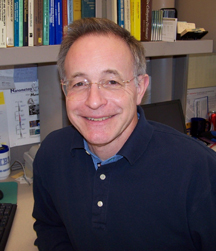

Michel Dupuis

Born November 8, 1949, Bayonne, France.
Laboratory Fellow, Pacific Northwest National Laboratory, Richland, WA, USA
Email:mdupuis2@buffalo.edu
Web: external link
Diplome d'ingenieur from the Ecole Polytechnique, Paris, France, 1972; Ph.D., State University of New York at Buffalo (Prof. H. F. King) 1976; Postdoctoral Associate, IBM Research Laboratory, San Jose, CA (with B. Liu), 1976–78; Staff, National Resource for Computation in Chemistry, Lawrence Berkeley National Laboratory (with W.A. Lester Jr.), 1978–84; Senior Scientist, IBM Corporation, Kingston, NY (with E. Clementi), 1984–1995; Laboratory Fellow, Pacific Northwest National Laboratory, 1995– ; Guest Professor and JSPS Fellow of the University of Tokyo, Japan, 1996, 1998, and 2000. Adjoint Fellow, Center for Quantum Life Sciences, Hiroshima University, Japan, 2003– ;
Author of:
Important Contributions:
- Method developments: Early developments were related to the novel "Rys Quadrature" method for the computation of the ubiquitous electron repulsion integrals in molecular calculations, including the systematic extension to high angular momentum Gaussian functions, to derivatives with respect to Cartesian coordinates, and to a variety of electronic property operators. This work played a critical role in the flourishing of the gradient technology in the early 1980's. The legacy can be traced in several computer codes that originated from the original HONDO code, including the GAMESS-US code. Novel treatments of molecular symmetry based on the "petite list" formulation were also formulated. The pioneering work of Enrico Clementi in parallel computing in the early '80s was extended to the techniques of gradient and property calculations. This early work was fundamental in identifying computational bottlenecks and strategies to be adopted in next-generation massively parallel programs for chemistry, such as PNNL's NWChem code.
-
Electronic Structure and Reactivity:
Our early interest lied in the application of the multi-configuration Hartree–Fock method (MCSCF) to the characterization of ground and electronic excited states of polyatomic molecules and to the accurate determination of activation energies of chemical reactions in the gas phase. A number of early systematic studies, carried out with the HONDO code, established that the MCSCF approach over-emphasizes valence electron correlation effects and that accounting for dynamic electron correlation is essential for quantitative accuracy. Extensions of these methods to the condensed phase using dielectric continuum models and explicit QM/MM solvation models and dynamics have been carried out.
Electron transfer is a most fundamental process at the heart of many areas of chemistry, from biochemistry to electrochemistry, to molecular electronic devices. Our work focused on the ab initio computational characterization of the parameters, reorganization energy and electronic coupling, that enter Marcus' theory to gain a fundamental understanding of the factors that control ET. We developed and applied the methodology to study molecular devices, complex enzymatic processes, and recently for the first time in the characterization of electron/hole mobility in metal oxides relevant to photo-catalysis.
Unprecedented new insight into reactivity can be gained through direct molecular dynamics investigations of chemical reactions. In recent years we have used the approach to characterize dramatic finite temperature effects on chemical reactivity. Direct dynamics simulations have illustrated how temperature is responsible for systems sampling parts of phase space near the transition state that make the reaction appear to follow, say, a step-wise mechanism in contrast to a concerted mechanism as predicted by the IRC. Direct dynamics studies of borderline mechanism reactions have also shown that two products may result from a single transition state and that higher temperature switches the product distribution. Traditionally such a phenomenon is assigned to the existence of two pathways with two barriers and the higher barrier being more accessible at higher temperature. In contrast, this type of borderline reactions exhibit a subsequent reactive step from one product region to the other by going over a ridge, and this process depends on the distribution of internal energy in the product.